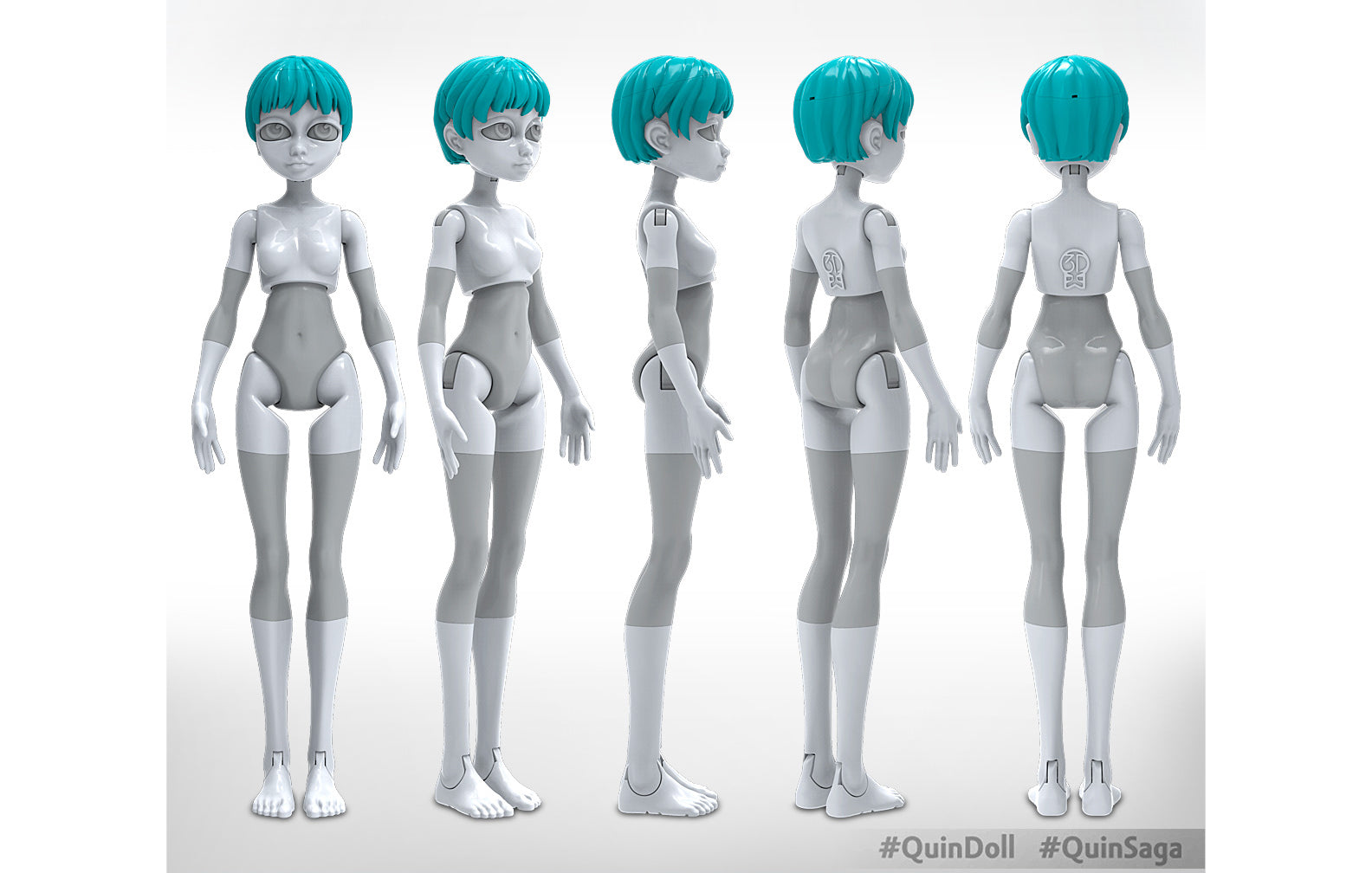PRESS RELEASE: Pin System Patent
3DKToys' 3D-Printable Fashion Doll Leads To Additive Manufacturing Patent

Recently, US Patent 9,944,022, "pin and void systems and methods for connecting 3D-printable objects" was granted. It's a lengthy summation for a technology with seemingly humble beginnings: 3DK's search to make quality toys with your desktop 3D printer.
Brian Quincy Robinson, CEO and co-founder of Ghost Capital, Inc. (Parent Co. of 3DKToys.com), is named as inventor on the patent.
PINning down a solution to aVOID a frequent headache
The beginning of this journey was sparked by the dilemma that most all 3D printing enthusiasts have encountered: The typical desktop 3D printer's limited build volume, and how to build beyond those limitations!

It's early 2014, and the minds behind 3DK are fast at work trying to make their impression on the rapidly-expanding world of 3D printing. It was only a matter of time before the creators (having extensive experience within the toy industry) would settle on the disruptive prospect of a Barbie-sized fashion doll that could be easily 3D printed at home. Their creation would save consumer dollars and create engaging projects for old and young makers alike.
With special attention and care paid to 'ease of printing,' 3DK found a number of successes with their doll that they named 'Quin' (#QuinDoll). Among the top of the list of accomplishments: Parts that print without the need of support material; and assembling using a 'Pin and Void' system that allowed for the easiest assembly and disassembly, without causing damage to the doll's elements. It was now possible to 3D print a 12in. doll within the small build volume of 4in. x 4in. x 5.5in., and not use any support material! The Quin doll would 3D print support-free as a collection of segments that would reliably assemble via 3DK's Pin System to create a Barbie-sized doll, and likewise disassemble if you wanted to equip her with other compatible accessories. The new Pin and Void system proved to be very effective.

Moments in the Development of the Quin Doll Assembly
Making all the 3D-printed parts connect ...and reconnect
With the creation of the newly-designed 'Pin & Void' system, it was short order for 3DK to file with the USPTO to protect the design. They received notice earlier this year that the patent had been granted. Whereas the industry-wide implications of a patent that centers around the connectivity of 3D-printed parts have yet to be determined, the system has already proven its value in a variety of facets.
"From early on we actually saw the Pin & Void system as not only a means to connect and re-connect 3D-printed assemblies, but also as a sort of signature that we could incorporate within the 3D files we were releasing into the proverbial Wilds Of The Internet. Of course Natalie Mathis (3DK's President) and I still incorporated a 3DK logo proper on our models, but the 3DK Pin and Void system was a more innocuous way for us to make sure we could demonstrate ownership of digital content," said Quincy.
Over the past 5 years, 3DK has continued to develop new products and leverage their Pin and Void system, seeing its incorporation into all of their digital content. From fashion dolls to robots, skulls, dinosaurs, and test kits, the Pin and Void system has allowed creators to make more with less available space.

3DK's Pin and Void System has been instrumental in the creation of all 3DK products.
3DK continues to develop and protect IP and looks forward to sharing news as it becomes available in the future.
Additional Images



Patent 9,944,022 Illustration - Figure 7

Patent 9,944,022 Illustration - Figures 8A - 8D

Patent 9,944,022 Illustration - Figures 4A - 4D

Patent 9,944,022 Illustration - Figure 9

3DKitbash's Quin Doll - Turnaround Render

3DKitbash 3D Printing Pin System Appendages
PRESS COVERAGE
Click HERE to read what 3Ders.org had to say about the patent.
